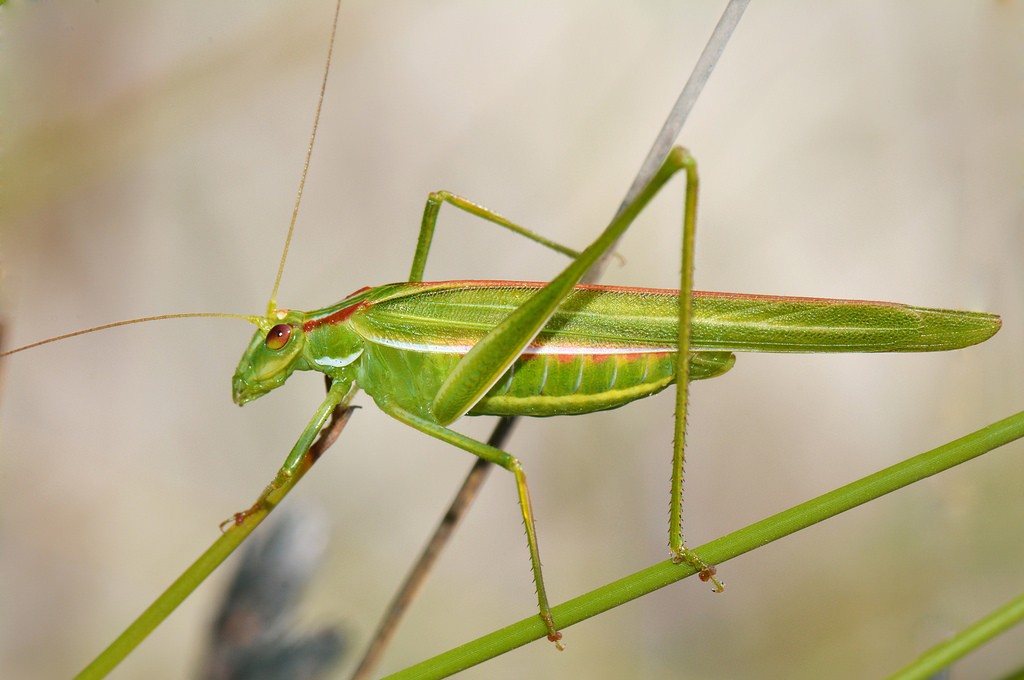Accusations of stridulation

Katydid. Photo: Jean and Fred, Creative Commons, some rights reserved
Over the past week in my neighborhood I’ve heard arguments through the open window almost every night as I drift off to sleep. The bickering is always the same, and seems to be fraught with baseless accusations—a real “he said, she said” kind of thing. It doesn’t keep me awake or anything, but I wouldn’t mind some resolution. I mean, what is it, allegedly, that Katy did?
Katydids are similar to their cousins the grasshoppers in size and shape, except that they’re bright green and have long wispy antennae. Both the male and the female call to find mates, an unusual feature in the insect world where the male is usually the only one who sings. Katydids call by rubbing their forewings together, an act known as stridulation. Their “ears,” or tympanic organs, are actually located on their front legs.
Calls vary by species as well as by geographic location. Here in the northern United States, katydids most frequently make an eight-pulse call consisting of three phrases. To many people it sounds like “Ka-ty-did, she did-n’t, she-did.” Technically it’s the male who makes this call, so his argument is really with himself (some readers may not find that surprising). The female responds with a one-note tick, which probably translates to “Humph!”
Throughout the world, katydids are both ubiquitous and numerous. In the U.S. we have roughly 100 species, and in the Amazon rainforest there are an estimated 2,000 species. If you’ve never seen a katydid, you’re not alone in that. Because these insects are nocturnal, even entomologists (by definition, scientists who study “entoms,” which presumably is another word for insects) find it challenging to study katydids.
In the late 1960s two entomologists spent months driving north and south along the Appalachian Mountains at night, tape-recording scores of different katydid species’ calls. As a result of their arduous and painstaking study, we know more about katydid distribution and interbreeding. Also, far fewer people now go into the field of entomology. (OK, I made that up.)
Many species of katydids live in trees. I once stayed in a house built into a hillside and the screens in the front bedrooms, which were essentially in the treetops, were swarmed by these green insects on summer nights. Although they feed on many types of plants in addition to trees, katydids in our neck of the woods (so to speak) are generally not considered pests. Actually they’re an important source of protein for many birds and other small animals.
An old Abenaki friend told me that katydids begin calling about six weeks before the first frost; this way one can tell whether or not it will be a late fall. For a while I would mark on the calendar when the first katydid called, and in my scientifically-unsound sample, the katydids were correct (i.e., Katy did).
Recently I came across a story, attributed to the Cherokee, in which a katydid predicted a hunter’s death. It wasn’t quite clear to me how that worked, though. Being middle-aged is enough to make me aware of human mortality. I hope to enjoy their song for many summers to come, but in the event I’m faced with a serious health crisis, I won’t accuse the katydids of having a hand in it.
Paul Hetzler is a horticulture and natural resources educator with Cornell Cooperative Extension of St. Lawrence County.







